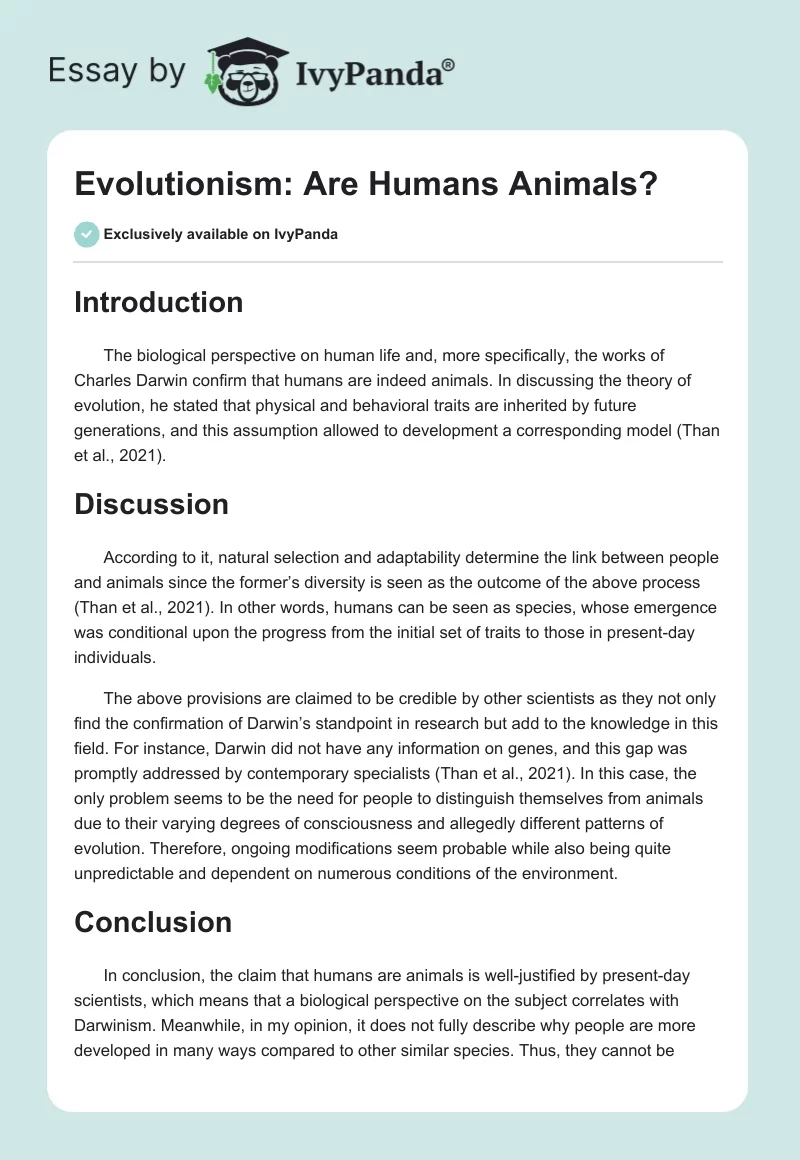Introduction
The biological perspective on human life and, more specifically, the works of Charles Darwin confirm that humans are indeed animals. In discussing the theory of evolution, he stated that physical and behavioral traits are inherited by future generations, and this assumption allowed to development a corresponding model (Than et al., 2021).
Discussion
According to it, natural selection and adaptability determine the link between people and animals since the former’s diversity is seen as the outcome of the above process (Than et al., 2021). In other words, humans can be seen as species, whose emergence was conditional upon the progress from the initial set of traits to those in present-day individuals.
The above provisions are claimed to be credible by other scientists as they not only find the confirmation of Darwin’s standpoint in research but add to the knowledge in this field. For instance, Darwin did not have any information on genes, and this gap was promptly addressed by contemporary specialists (Than et al., 2021). In this case, the only problem seems to be the need for people to distinguish themselves from animals due to their varying degrees of consciousness and allegedly different patterns of evolution. Therefore, ongoing modifications seem probable while also being quite unpredictable and dependent on numerous conditions of the environment.
Conclusion
In conclusion, the claim that humans are animals is well-justified by present-day scientists, which means that a biological perspective on the subject correlates with Darwinism. Meanwhile, in my opinion, it does not fully describe why people are more developed in many ways compared to other similar species. Thus, they cannot be viewed as animals in all aspects of their development, and additional considerations are required for a thorough analysis instead of focusing solely on genes.
Reference
Than, K., Taylor, A. P., & Garner, T. (2021). What is Darwin’s theory of evolution? Live Science. Web.


